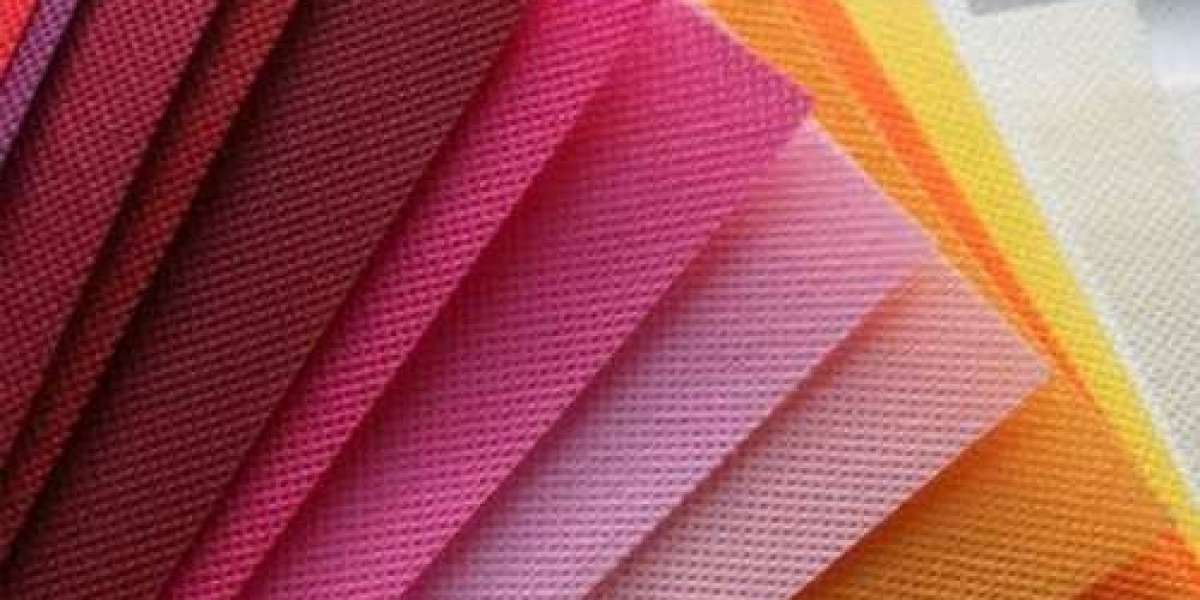In today’s world, where environmental concerns are at the forefront of global discussions, industries are actively seeking sustainable alternatives to traditional materials. One such material revolutionizing various sectors is PP Spunbond Nonwoven Fabric. As a versatile and eco-friendly option, this fabric has garnered attention for its applications in reducing waste, while also offering functional and economic benefits.
The Growing Importance of Non Woven Fabrics
The environmental impact of waste, particularly plastic waste, has driven the demand for materials that are recyclable, biodegradable, or reusable. Traditional woven fabrics often rely on resource-intensive processes and result in products that contribute to environmental degradation if improperly disposed of. In contrast, non woven fabrics present a sustainable solution.
A significant portion of this shift is attributed to the increasing adoption of PP Spunbond Nonwoven Fabric, a product manufactured through a process that minimizes waste during production. Leading Non woven fabric manufacturer have innovated ways to create products that not only serve functional purposes but also align with the principles of sustainability.
How PP Spunbond Nonwoven Fabric Helps Reduce Waste
1. Production Efficiency
PP Spunbond Nonwoven Fabric stands out for its resource-efficient production process. Unlike woven fabrics, which require spinning, weaving, and other resource-heavy procedures, non woven fabrics are created in a single-step process. Fibers are directly bonded together, reducing energy consumption and waste production.
2. Recyclability
Polypropylene, the base material for PP Spunbond Nonwoven Fabric, is fully recyclable. Many non woven fabric manufacturers have incorporated recycling programs to reclaim used products and repurpose them into new materials. This circular approach significantly reduces the fabric's environmental footprint.
3. Durability and Longevity
One of the key advantages of PP Spunbond Nonwoven Fabric is its durability. Products made from this fabric are long-lasting and can withstand wear and tear, which reduces the need for frequent replacements. By extending the life cycle of products, less waste is generated over time.
4. Biodegradability Options
Although not all PP Spunbond Nonwoven Fabrics are biodegradable, advancements in technology have led to the development of variants that decompose naturally under certain conditions. This innovation addresses concerns about landfill overflow and environmental pollution.
5. Lightweight and Versatile Design
The lightweight nature of PP Spunbond Nonwoven Fabric reduces transportation-related emissions and energy use. Additionally, its versatility allows it to replace heavier, less eco-friendly materials in various applications, further promoting waste reduction.
Applications of PP Spunbond Nonwoven Fabric
1. Healthcare Sector
In healthcare, where single-use products are essential for hygiene and safety, PP Spunbond Nonwoven Fabric plays a vital role. From surgical gowns and masks to disposable bedsheets, this fabric ensures high performance while addressing the need for responsible disposal.
2. Agriculture
Farmers and agricultural industries use Non woven fabric for crop protection, soil stabilization, and weed control. These products minimize the need for chemical treatments and reduce soil erosion, contributing to a healthier environment.
3. Packaging and Shopping Bags
The ban on single-use plastics in many regions has fueled demand for eco-friendly packaging solutions. PP Spunbond Nonwoven Fabric is used to produce reusable shopping bags and lightweight packaging materials that are both sturdy and sustainable.
4. Construction
In construction, PP Spunbond Nonwoven Fabric is utilized for geotextiles, roofing, and insulation. Its properties, such as breathability and resistance to moisture, enhance building durability while reducing reliance on less sustainable materials.
The Role of Manufacturers in Promoting Sustainability
The shift toward sustainable solutions would not be possible without the efforts of non woven fabric manufacturers. These companies are at the forefront of developing innovative materials that cater to a broad range of industries while maintaining eco-friendly standards. Key strategies employed by manufacturers include:
- Investing in Green Technologies: Manufacturers are adopting technologies that reduce waste during production, such as waterless dyeing and energy-efficient machinery.
- Creating Biodegradable Options: With growing consumer demand for environmentally responsible products, many manufacturers are developing biodegradable variants of PP Spunbond Nonwoven Fabric.
- Encouraging Recycling Initiatives: By reclaiming and repurposing used fabrics, manufacturers close the loop in the production cycle, reducing the burden on natural resources.
Challenges and Opportunities
While PP Spunbond Nonwoven Fabric offers numerous advantages, its widespread adoption is not without challenges. The primary obstacle lies in raising awareness about its benefits. Many consumers and businesses still rely on traditional materials, either due to lack of knowledge or initial cost considerations.
However, this also presents an opportunity for non woven fabric manufacturers to educate stakeholders and promote the long-term cost savings and environmental benefits of switching to PP Spunbond Nonwoven Fabric. Governments and policymakers can also play a crucial role by incentivizing the use of sustainable materials through subsidies and regulations.
A Future of Reduced Waste with PP Spunbond Nonwoven Fabric
The transition to sustainable materials like Non woven fabric spunbond is not merely a trend—it is a necessity in the face of escalating environmental challenges. This fabric represents a beacon of hope for industries seeking to align their operations with sustainability goals.
By embracing this innovative material, businesses can not only reduce their environmental footprint but also position themselves as leaders in the global movement toward sustainability. As technology continues to advance, the potential applications and benefits of PP Spunbond Nonwoven Fabric are bound to expand, paving the way for a cleaner and greener future.
Frequently Asked Questions (FAQs)
1. What is PP Spunbond Nonwoven Fabric used for?
PP Spunbond Nonwoven Fabric is used in a wide range of applications, including healthcare products (such as masks and surgical gowns), agricultural solutions (like crop covers and weed barriers), packaging materials, reusable shopping bags, and construction materials like geotextiles and insulation.
2. How does PP Spunbond Nonwoven Fabric contribute to sustainability?
This fabric contributes to sustainability through its efficient production process, recyclability, and durability. Its lightweight design reduces transportation emissions, and biodegradable options further enhance its environmental benefits.
3. Can PP Spunbond Nonwoven Fabric be recycled?
Yes, PP Spunbond Nonwoven Fabric can be recycled. Many manufacturers have established programs to reclaim and repurpose used products, helping to reduce waste and promote a circular economy.








